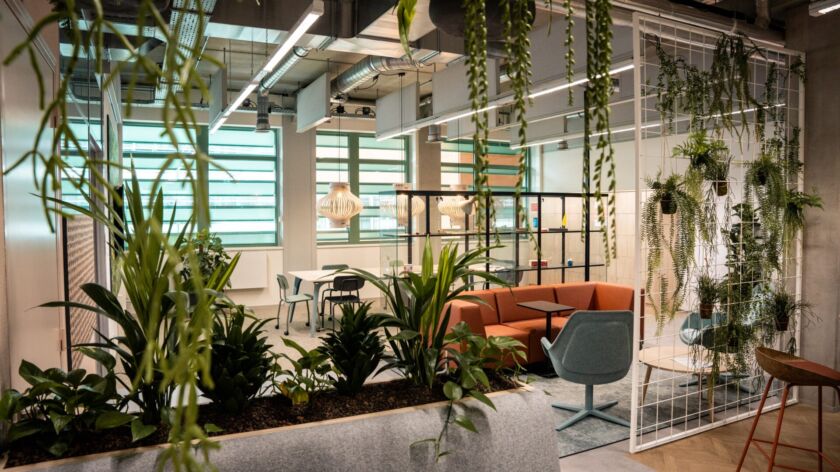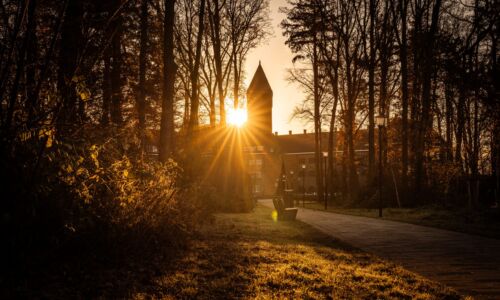From very positive to highly critical: new working environment in Huygens building divides employees
-
Foto: Johannes Fiebig
A pilot of shared workspaces in the Huygens building is creating a stir. Two departments are full of praise about the recently converted wing, but the third department is not. Researchers in particular seem to struggle with flex work. ‘It sometimes feels like we work in a call centre.’
What this article is about
Last June, three Faculty of Science departments relocated to a wing of the Huygens building where Radboud University’s new workplace concept is being rolled out.
Most employees are happy with their new workspace, but several researchers are critical. What exactly are they missing? Bookcases, a workspace reservation system, and more control over their offices.
Campus & Facilities staff defend their workspace policies and explain the reasons behind some of their choices. They also point to a major evaluation that is due to take place in early 2025, which can be used to make any required adjustments.
As a form of protest, an ISiS employee smuggled in a bookcase in the wing before the summer holidays. In vain: a day later, staff from the Faculty of Science Housing & Logistics department came and removed the bookcase, which is now gathering dust in the basement of the Huygens building. That bookcase is a symbol of the battle fought by several employees of the ISiS research institute to have more say in the design of their workspace.
Since June, they have been sharing a wing in the Huygens building with two other departments. Whereas most ISiS employees previously had their own workspace, that is no longer the case now. Nor do personal bookcases fit into the new work concept.
Compromises
Anyone walking into the renovated wing on the second floor of the Huygens building is amazed. Trendy houseplants, moss-covered walls, and soundproof walls: no expense seems to have been spared to make employees feel comfortable. In the communal pantry, people can drink coffee on bar stools or on one of the comfortable sofas. The rest of the department consists of workspaces: in shared, small offices, as well as in more open spaces.
Personal workspaces, on the other hand, are a thing of the past. The idea is that employees can choose a suitable space, depending on their work activity. The pantry at the entrance to the wing is intended for meeting and informal consultation. Behind it are spaces with different functions, such as bilateral rooms, eight work rooms, an office garden, and video call cells. At the back of the wing is a library with quiet workspaces. Activity-based flexible office is the scientific name for this approach to work.
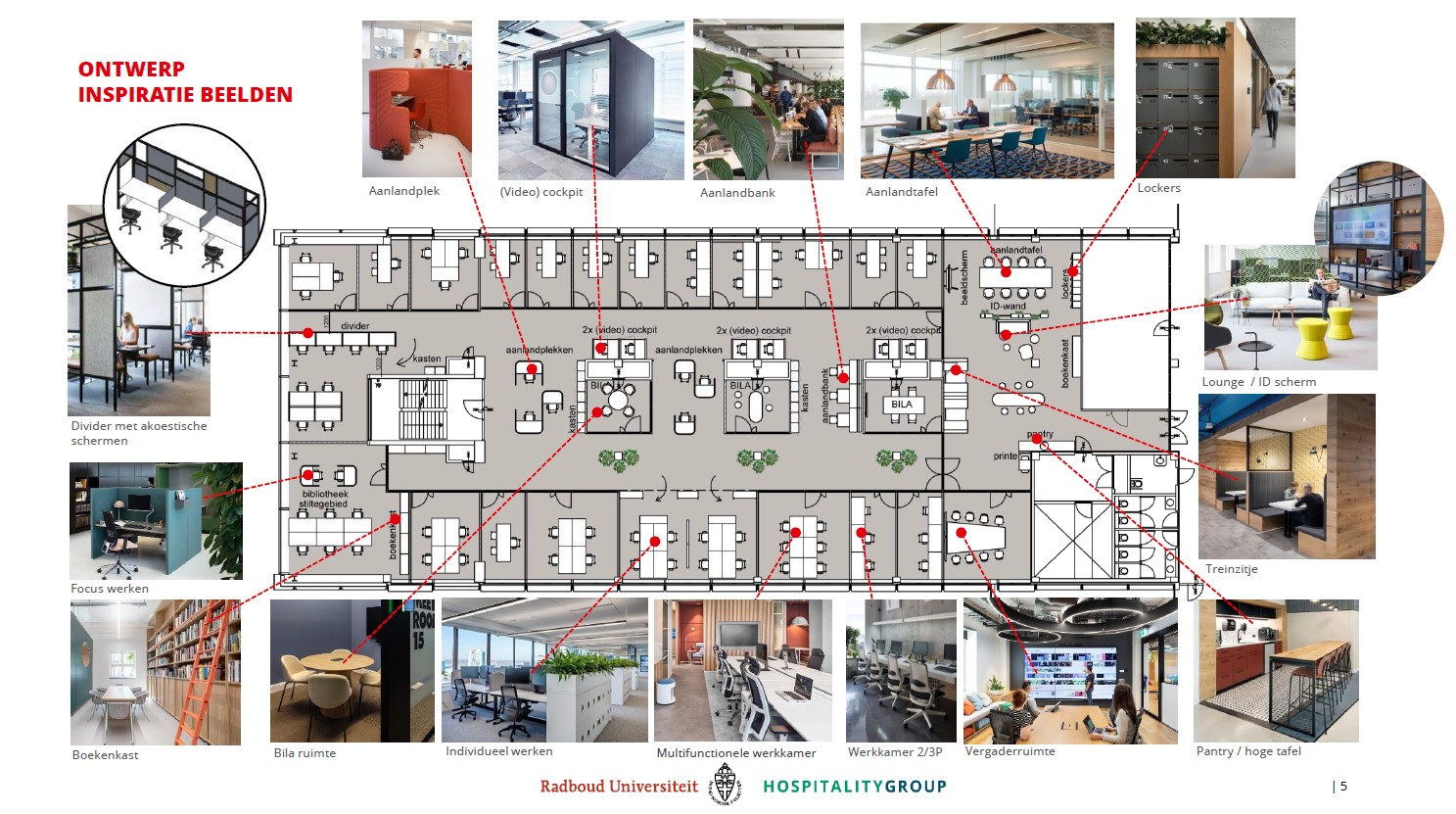
Koen Fleuren, head of Campus Development at Radboud University, prefers to use the term Radboud Duurzaam Werken (Radboud Sustainable Work). Sustainability lies, on the one hand, in adapting the working environment to the way people work, and, on the other, in the efficient use of the spaces available to the university, he explains. ‘That is why the workspace concept in the Huygens building was developed in close consultation with the employees of the relevant departments.’
But financial considerations certainly also play a role in the transition to shared workspaces, he admits. ‘Especially now that these considerations have become so urgent with the budget cuts.’
In the Huygens building, people have had to compromise when it comes to space for some years now. The science faculty grew so fast in staff and student numbers in recent years that it was bursting at the seams, explains Head of Housing and Logistics Noud van der Velden. A few years ago, there was talk of building an extra wing, but due to budget cuts, that plan has been put on hold. Whereas full-time staff previously had about 10 m2 square metres available per person, this has since been reduced to 8 m2.
‘In the old wing, the space was underutilised’
Wing 5 on the second floor was chosen for a pilot. Before the renovation, the wing only housed the 50 employees of the Institute for Science in Society, or ISiS for short. ‘The space was underutilised,’ says Fleuren.
In June, they returned to their former, converted workspace, which they now share with the Institute for Science Education (ISE) and Radboud Innovation Science (RIS), both of which have about 20 employees.
Personal library
A tour of the workplace reveals that ISiS employees are the most critical of the new workspace. The department, which consists of social scientists and philosophers, is an outlier within the science faculty. Several ISiS staff members with whom VOX spoke say they understand that the university needs to save money, and that it is better to save on workspace than on people. They also don’t want to be known as a troublesome department. But because they still hope to have more say over their workspace, they are choosing to tell their story nevertheless. At the same time, some of the department’s staff members are willing to give the new wing a chance, provided there is a proper evaluation.
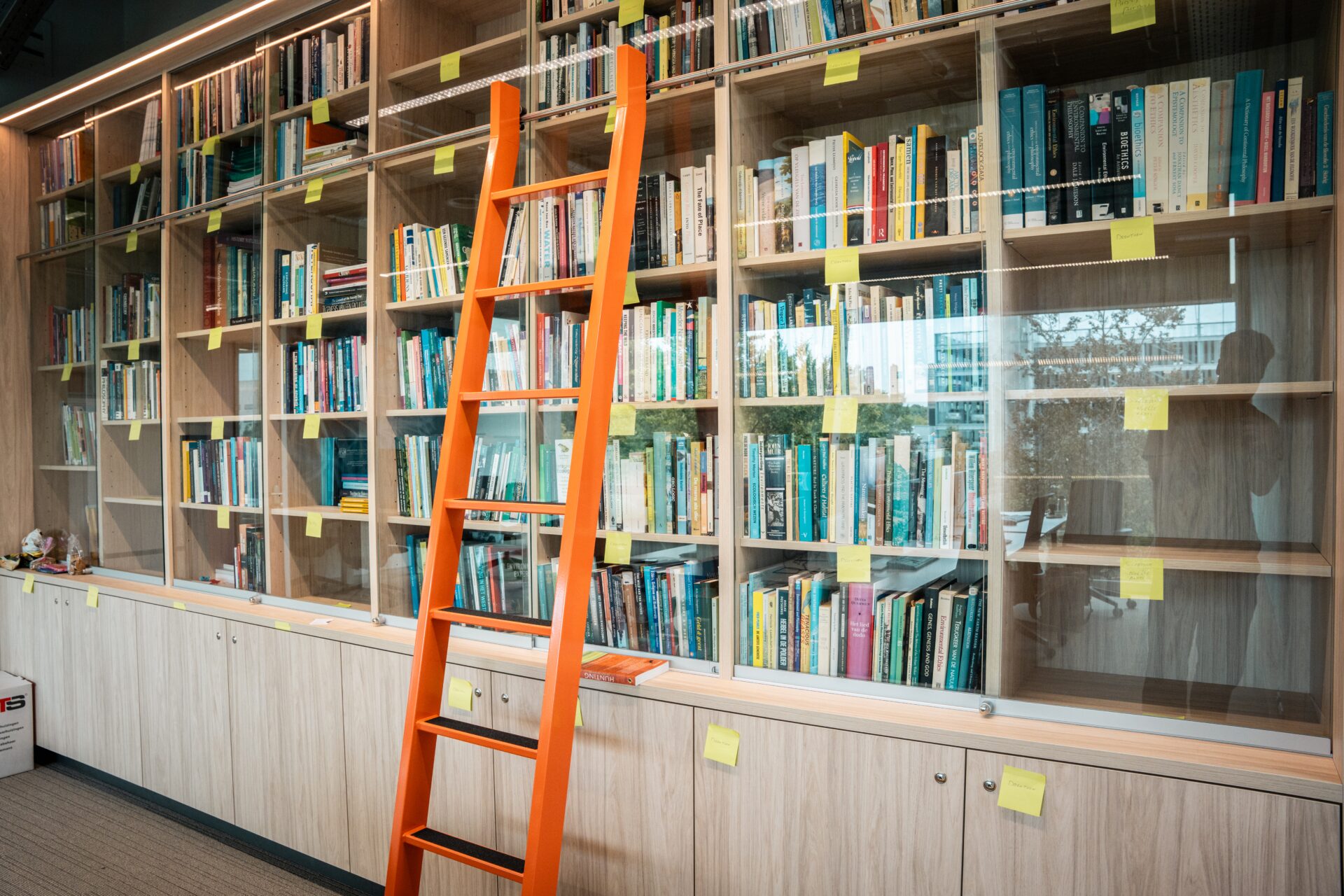
Willem Halffman, Associate Professor at ISiS, previously wrote in a column in VOX that he would prefer to work in a broom closet than in his new flex workspace. What Halffman misses most is his bookcase, he tells us in a room that he shares with two colleagues on the day of the interview. ‘So that when I’m meeting with a student, I can just pull out a book and say: “Here, please read this chapter”.’
For Associate Professor Martin Drenthen too, a personal library is a great loss. Some of his books are now in the shared library bookcase, while the rest are in moving boxes in his office. ‘But actually that is not allowed and I should take them home,’ he says. ‘But that is tricky, I would first have to remodel my home.’
And then there is that bookcase of another ISiS colleague, which was taken away by the Faculty of Science Housing & Logistics staff. As a silent protest, someone placed in a display case at the entrance to the corridor some articles on scientific research showing that activity-based flex work does not work.
No personal posters
According to Jeroen Ohm, project manager of Campus & Facilities, the employees’ wishes have already been taken into account in several ways. ‘They were involved in this project from the start. In the library, staff members have assigned shelves that they can fill in consultation with their colleagues. There are also bookcases in the team zones assigned to the three departments in the wing.’
The bookcases in the rooms, on the other hand, are not meant for permanent storage. Ohm: ‘Those are for temporary use, for example if you are working on something and you want to continue tomorrow.’
What bothers Halffman and Drenthen most, they tell us separately, is that they have lost full control over their working environment. For example, employees are not allowed to hang personal posters on the wall or place photo frames on their desks – unless they put them away in one of the 30 lockers at the end of the day.
‘We have become interchangeable passers-by’
The fact that employees are no longer allowed to decorate their workspace as they see fit and with personal items has a reason, according to Fleuren. ‘All employees should be able to feel welcome in this working environment. Because workspaces are used by different people, you want the desk to be left clean and empty for the next user.’
‘Actually, we have become interchangeable passers-by,’ says Drenthen. ‘That touches me personally. It sometimes feels like we work in a call centre. I tend to retreat back home, although I don’t really have room for that. I would much rather work on campus, in an inspiring environment with colleagues.’
Involvement through ambassadors
To reduce as much as possible these kinds of user problems, over the past 18 months, Campus & Facilities organised consultation sessions with so-called ambassadors from the three departments involved. According to several ISiS employees, those meetings too often focused on details, such as where the coffee room should be. More important issues, such as storage space for books, proved more difficult to organise.
So says Bernadette van Heel, who acted as ambassador on behalf of ISiS. ‘I found it frustrating that we ended up talking about the wording of text on signs in common areas that were meant to induce behavioural change, while there was so much anxiety among my colleagues about whether there would be enough rooms where they could work quietly.’
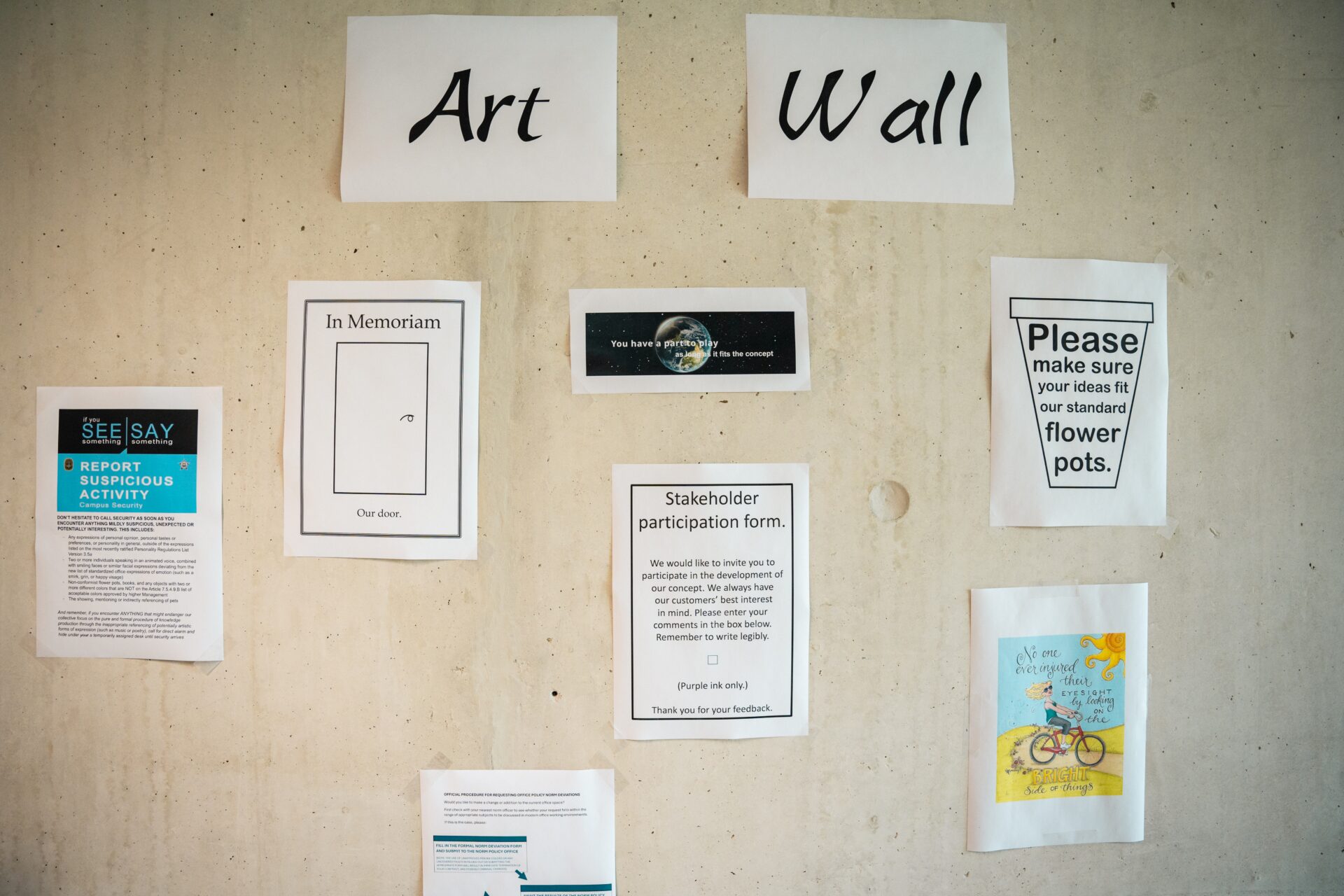
Yet not all ISiS staff are negative about the new concept. Assistant Professor Serge Horbach says he enjoys working in an open space, mostly with PhD candidates. He is under the impression that a majority is trying to make the best of it. ‘A smaller group is experiencing more problems,’ he says. ‘And the rest of the department is supporting them in that, because it’s hard to see your colleagues struggling.’
‘Besides a lot of disadvantages, there are also advantages to the new workspace,’ Van Heel also says. ‘For example, the computer screens are beautiful, and there is also much more light than in the Transitorium, where we had our temporary accommodation.’
No reservation system
Besides personal bookcases, the ISiS employees have another big wish: a reservation system for workspaces, just as there is for meeting rooms. Until that reservation system is in place, fewer employees will be willing to commute to campus. ‘Colleagues coming from far away want to make sure they have a suitable workspace when they commute to campus,’ says ISiS Director Henk de Regt. ‘Otherwise, they might as well stay at home. That is a source of concern for us.’
‘Of course, it may happen that your preferred spot is occupied, but there is always a suitable workspace available’
According to the Campus & Facilities staff, the option of reserving a workspace is not necessary because there has always been enough workspace so far. ‘The occupancy rate is currently around 50%,’ Ohm says. ‘Of course, it may happen that your preferred spot is occupied, but there is always a suitable workspace available. If the evaluation shows that there is a need for reserving workspaces for other reasons, we can of course always reconsider.’
Very cosy
Interestingly, employees of the other two departments are very satisfied with the new working environment. ‘There were fears in our department that we would not have enough workspaces in the new wing, but that does not appear to be the case as yet,’ says Peisi Ying-Rutten of the Institute for Science Education. ‘At first, we were not allowed to bring our own plants to the new workspace. But since some people were really attached to their plants, an exception was made. And we are now also allowed to hang posters on the walls, as long as they have to do with work.’
‘I really like it here,’ says Serge Giezek of Radboud Innovation Science. ‘All the colleagues I spoke to are enthusiastic and positive about the new workspace. Not only does it look very nice, the number of interactions in the workplace has also increased, which has a positive impact on job satisfaction.’ He also had a positive experience of the participatory process with Campus & Facilities in his role as ambassador.
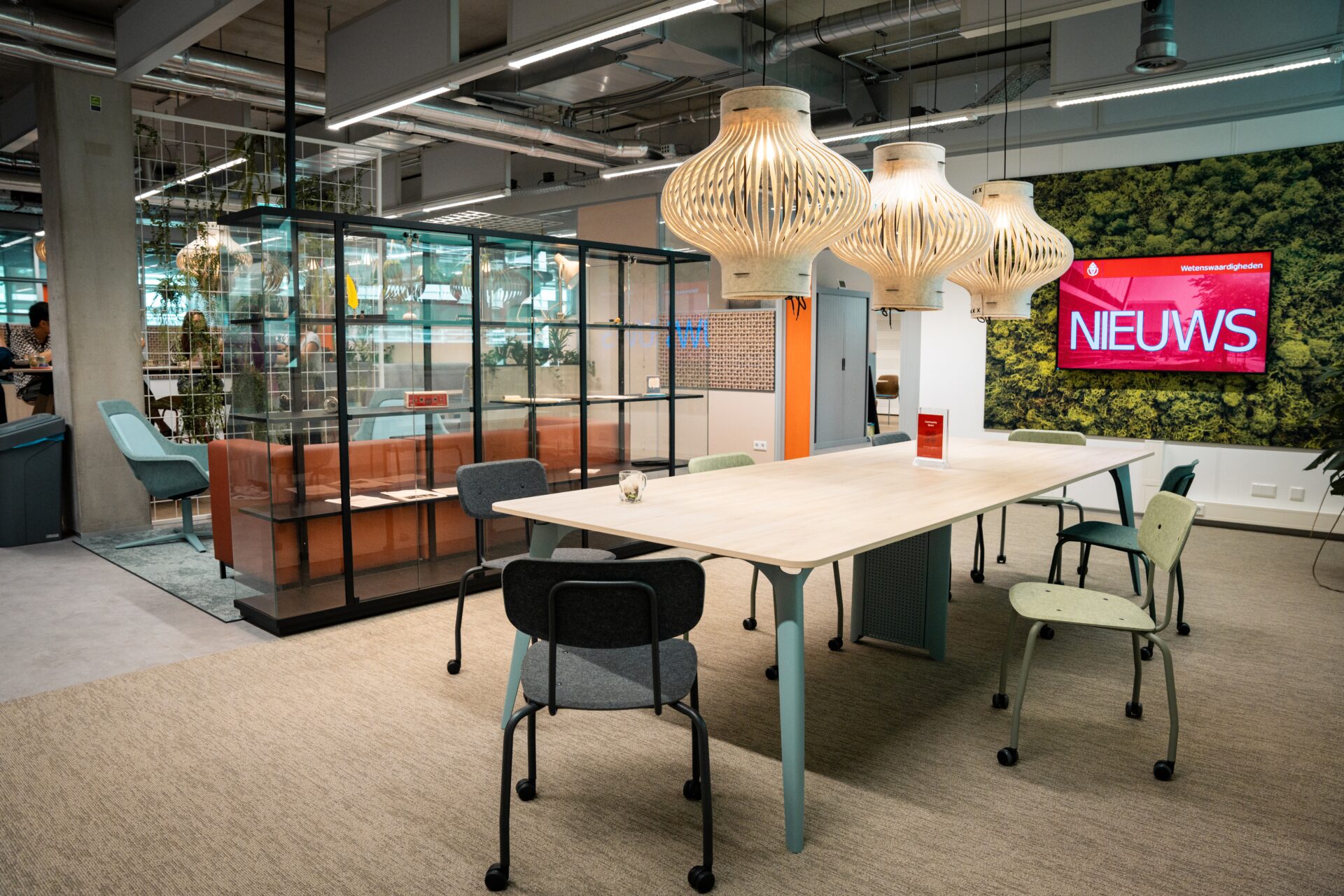
The tasks of RIS, Giezek points out, do differ somewhat from those of ISiS. RIS staff, for instance, do not need many books, and the department, which brings in European and regional grants, tries to work with as little paper as possible. ‘We even try to use the printer as little as possible,’ he says.
Oppressive panopticon
Could it be that the new working environment is less suitable for researchers than for support services because they perform different kinds of tasks? At other Dutch universities, flex work does seem to evoke quite a bit of resistance.
Opponents of flex work at Erasmus University Rotterdam compared the work concept to an oppressive panopticon in which employees no longer have privacy and start behaving according to what is expected of them. In Leiden, several researchers expressed fears about the transition to an office garden, saying that it was associated with, among other things loss of concentration and an increase in working from home. At Wageningen University, resistance to flex work was so strong that the concept was adjusted or even altogether reversed in some places.
Elsewhere on campus
Radboud Duurzaam Werken is already being applied within the Berchmanianum and at several Radboud Services departments. Similar projects are due to be launched soon at other units.
The precise approach may differ from one organisational unit to another because we want to match the employees’ wishes as closely as possible, says Koen Fleuren, head of Campus Development at Radboud University. ‘We are also currently in dialogue with the Nijmegen School of Management on how to move forward with a similar concept,’ says Fleuren. ‘We want to develop the workspaces together with the users.’
The Works Council is following the pilot with interest, says Works Council member Peter van der Heiden. ‘To avoid a pilot suddenly becoming standing policy, you do need a thorough evaluation.’
‘I cannot focus in the flex workspace; I am too easily distracted,’ reports an ISiS employee who wishes to remain anonymous.* ‘Some people do very well in a flex environment, others not at all. I belong to the latter group. This leads to a lot of stress. I now mostly try to work from home or from some other place on campus.’
According to Fleuren, researchers should also be able to work well in the renovated wing. ‘There are enough work rooms where employees can work on their own and in silence and where one-on-one meetings can be held.’
Exchange
Yet it has not escaped the head of Campus Development that the science department is more critical than the other two. ‘We tried to meet their needs as much as possible, but maybe we need to do things differently in other places,’ says Fleuren. ‘Their concerns are legitimate and we want to take them seriously. The goal is to create a workspace that is functional and enjoyable for everyone, and in future projects, we want to be able to learn from our experiences.’
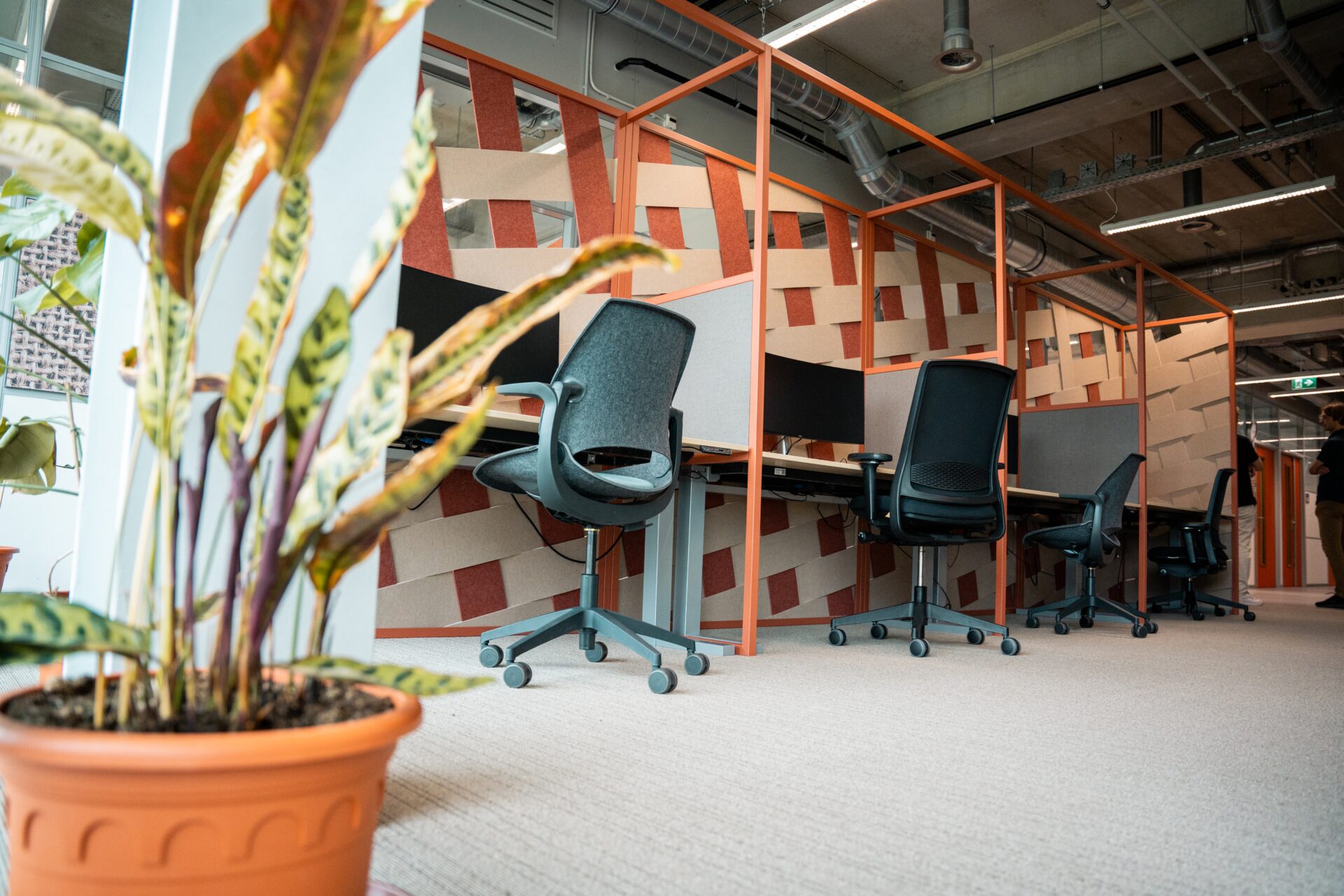
An interim evaluation is scheduled for mid-October. ‘We will carry out the evaluation in consultation with the Hospitality Group,’ says Jeroen Ohm. ‘The Hospitality Group is an external party that specialises in this kind of process. They have been involved in this project from the start.’ A final evaluation will follow in early 2025.
‘There are still plenty of departments in the Mercator building that would love to move to the Huygens building’
But what if the evaluation shows that the new working environment really does not work for ISiS? ‘Then we can easily swap them for another department,’ says building manager Van der Velden. ‘There are still plenty of departments in the Mercator building that would love to move to the Huygens building.’
*This employee’s name is known to the editors.

